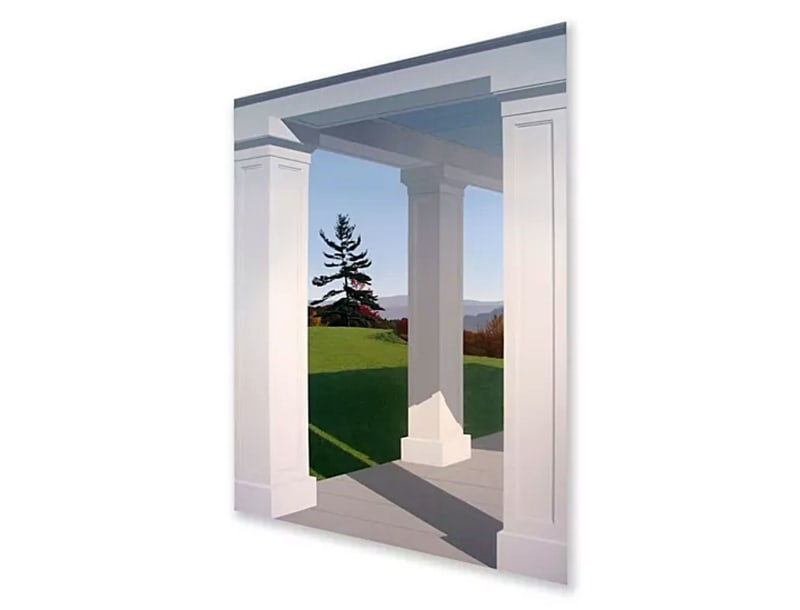The 2001 painting The White Pine made for a dramatic introduction to Warner Friedman's trompe l' oeil landscapes. Rising to its full ten-foot height directly opposite the vaulting gallery entrance, the painting appeared to be tilting sharply away from the viewer until a closer approach revealed the optical illusion created by a raked view on a shaped canvas.
Friedman, who trained as an engineer before enrolling in art at Cooper Union, in 1957, frames each prstine, crisp New England landscape with elements of a built environment that reinforce a sense of place. In The White Pine, a minimalist Yankee porch - its columns alluding to the Federal era as well as to classical antiquity, which Friedman often quotes - engages with the flattened view of a scraggly but upright evergreen and its surrounding terrain in a way that suggests unity and disharmony at once. This house, after all, could well have been built with pinewood felled from the former forestland.
Similar thoughts comne to mind when taking in the artist's other framing devices: house corners, barnyard gates, seawall fretwork, cemetary fences, and rooftops. A storm-emptied beach is seen through an amputated section of a life-guard station. These structural elements convey protection but also exclusion, shelter and segregation, cozy nearness and unsettling distance. These pictures embrace nature while controlling it: here are the refined geometries of a certain vision ultimately wanting to keep uncertainty at bay.
The monumental, monochrome stretches of friedman's fragmented architecture are as finely painted as his realist scenery. They show abstraction seeking a place amid representation. Little wonder that Friedman included the names LeWitt and Mondrian on tombstones in the hald-imnaginary New England graveyard of Civilization (2010).
